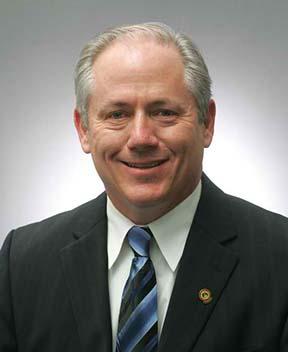Incoming GCSAA president Pat Finlen, CGCS at The Olympic Club in San Francisco, has headed the maintenance operation at the 45-hole Bay Area club since 2002. Last year, he worked with the USGA on the setup and conditioning of the club's Lakeside Course for the U.S. Open while managing a total reconstruction of the club's Ocean Course with architect Bill Love. Recently, he answered a few pointed questions from Golfweek's Bradley Klein, Ph.D.
Question: Why take on the presidency of the GCSAA after a year like that?
 Answer: Actually, the timing is perfect for me, for the club and for the GCSAA. This will be my eighth year on the board, and that service has helped me become a better superintendent, a better manager and a better person. So I don't see it as time away; I see it as time invested.
Answer: Actually, the timing is perfect for me, for the club and for the GCSAA. This will be my eighth year on the board, and that service has helped me become a better superintendent, a better manager and a better person. So I don't see it as time away; I see it as time invested.
Q: What changes are your fellow superintendents making as you adjust to a tougher business climate?
A: Many of the budget cuts actually started right after 9/11, so superintendents were better prepared for what hit the country in 2008. We're all getting better at managing labor, budgeting time, engaging in customer service. We're providing equal if not better course conditions for less money. Superintendents were accustomed to being left alone, so to speak, out on the golf course with our head down looking at turf. Now we're part of a team, part of a facility's financial success. Many are doing more with fewer inputs of water, pesticides and fertilizer through better management.
Q: How much of that has been driven by ecology?
A: Business and ecology go hand in hand. What better time to make environmental changes? To be sure, they are more widely accepted around the country now than a decade ago. The West Coast and the East Coast may have been at the forefront, but I tell my friends and colleagues in Kansas City, where I'm from, "It's coming your way." And GCSAA, which is based in Lawrence, Kansas, has been at the forefront in helping provide superintendents with the tools to be better managers and stewards of their courses.
Q: What are superintendents today doing differently to explain this to golfers?
A: There's a night-and-day difference from when I started in 1983. We used to rely upon the folks in the golf shop as our mouthpiece while we were out on the course. Now we spend more time communicating directly. The more we educate the golf shop, the more we educate golfers, the more we speak directly in the community, the better our message will get out there. Email is one thing; standing face-to-face with golfers on the first tee makes it more readily acceptable. And there's a lot more collaboration across the entire industry, such as with National Golf Day April 17 this year when we go out with the PGA of America and other stakeholders, including course owners and general managers, and make our case for a $70 billion golf industry that employs 2 million people here in the U.S. Recognition of superintendents has never been higher. On the recent CBS telecast of the Farmers Insurance Open, commentator Jim Nantz told a national audience that the GCSAA Golf Championship would be held at Torrey Pines the following week using the same fourth-round hole locations used this year. That's pretty cool.

